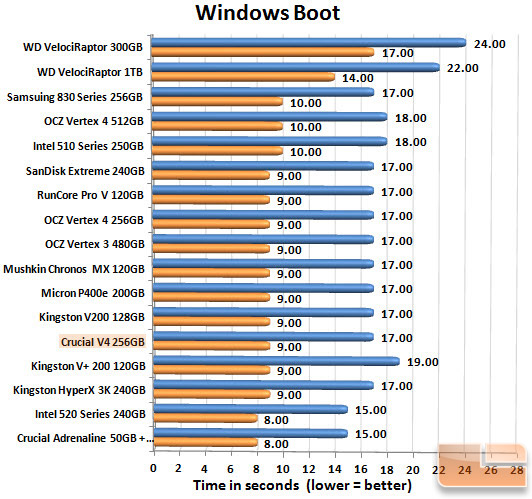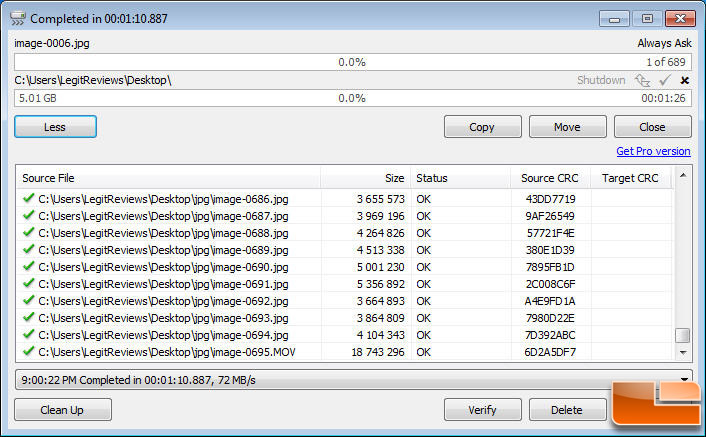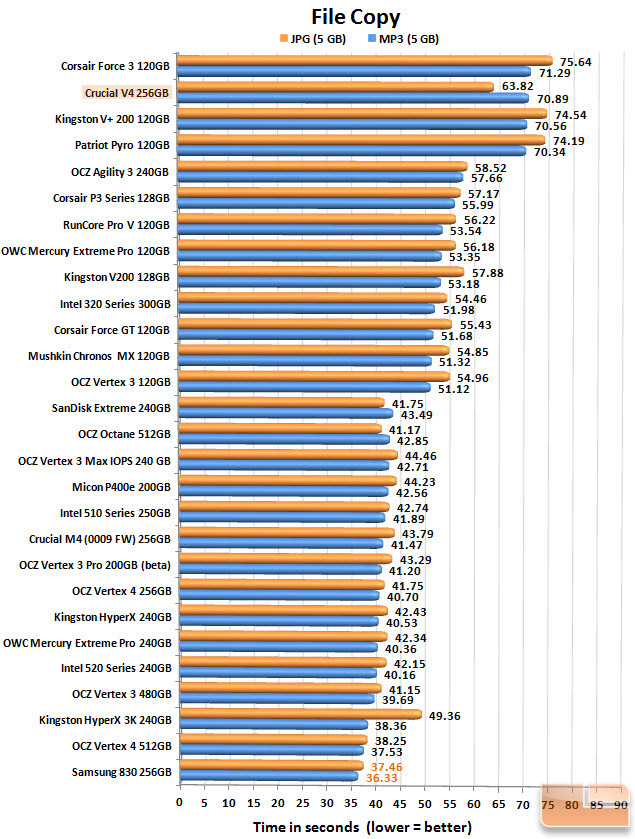Crucial V4 256GB SATA II SSD Review
Crucial V4 – Real World Tests
One of the most common operations performed on a PC is moving/copying files. Using a free application called Teracopy, we copied large numbers of two file types from one folder to another on the same drive. Teracopy allows us to objectively measure the time of transfer and using the same drive prevents other devices from tainting the outcome. The operation requires the drive to perform both sustained read and writes simultaneously. The first set of files is a 5GB collection of JPG’s of variable size and compression levels with a few movie (.MOV) files thrown in for good measure since most cameras now take video as well as stills. The second is a collection of MP3 files of various sizes which totals 5GB collectively. These file types were chosen due to their wide use and mixture of file sizes and compression levels.
Install Results: It’s no surprise that the Crucial V4 posts some of the slowest file copy times in our comparison being limited in bandwidth by the 3Gbps interface. Still, moving 5GB of data in just over a minute is still quick considering what you would see from a spinning platter drive.
Windows start up/shutdown time is always something people are interested in and we haven’t done it in a while because there was little variation with the majority of the SSDs. We recently began using an application called BootRacer to objectively measure the startup times of the drives. All of the instances of Windows were identical and freshly installed with only the video driver installed.

Test Results: Boot time is right where most drives are in the comparison showing that the interface is really not much of a factor in Windows boot times.
We’ll wrap this with a look at the total drive capacity and our final thoughts.




Comments are closed.